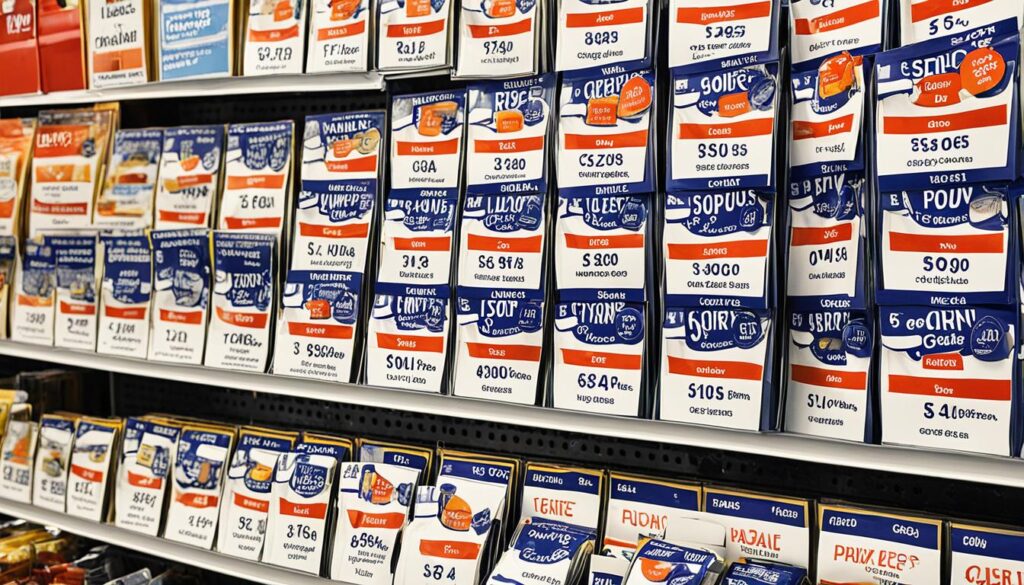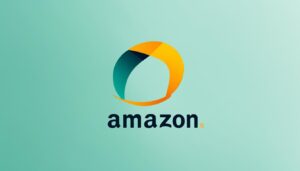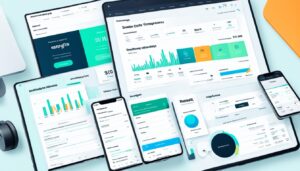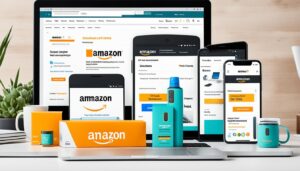Pricing plays a significant role in driving sales and promoting customer loyalty. Promotional pricing strategies are a powerful tool that enables businesses to attract new customers, create buzz around their products or services, and maximize profits. In this article, we will explore the fundamentals of promotional pricing strategies and how they can help businesses achieve their sales goals. Stay up to date with our blog.
Key Takeaways:
- Promotional pricing strategies help businesses attract new customers and maximize profits
- Clear objectives and market analysis are crucial for effective promotional campaigns
- Compelling offers, appropriate pricing tactics, and personalization can enhance the impact of promotions
- Measuring and analyzing promotional campaigns is necessary for continuous improvement
- Optimizing promotional pricing strategies based on data and insights can drive long-term success
Understanding Promotional Pricing Strategies
Pricing promotions are a key factor in attracting customers and driving sales. To create effective promotions, businesses must understand the concept of promotional pricing strategies. These strategies involve various pricing models and techniques, including:
- Volume discounts
- Bundling
- Free samples
- Price matching
- Loyalty programs
Each promotional pricing model has its strengths and weaknesses, and choosing the right one depends on the business’s objectives and target market. Promotional pricing techniques, such as flash sales and limited-time offers, can also be used to create urgency and drive sales.
Businesses must carefully consider their pricing promotions to ensure that they align with their marketing goals and objectives. As we explore different pricing models and techniques in the following sections, keep in mind that the most effective promotional pricing strategies are those that provide value to customers while driving sales.
Setting Clear Objectives for Promotional Campaigns
Before launching a promotional campaign, it’s essential to set clear objectives to determine the campaign’s goals and measure its success. A well-defined objective helps to create a focused promotional strategy that resonates with the target audience, ultimately driving revenue and profitability.
One effective way to set objectives is to define SMART goals- Specific, Measurable, Attainable, Relevant, and Time-bound. This approach ensures that objectives are concrete, measurable, and achievable within the given timeline.
When setting objectives, consider the target audience and the message you want to convey through your campaign. Identify the pricing tactics, promotional offers, and marketing promotions that align with campaign objectives. Conduct market research to verify whether your objectives fit your target audience and analyze competitors’ promotional campaigns to avoid duplication.
Once objectives are set, monitor their progress using key performance indicators (KPIs) such as conversion rate, engagement rate, and sales. This information ensures that the campaign stays on track and allows for any necessary adjustments to maximize its impact.
Setting clear objectives is just the beginning of executing an effective promotional campaign. The next step is to analyze the target market, understand the different pricing tactics, and craft attractive promotional offers to meet campaign objectives.
Analyzing the Target Market
Successfully reaching your target market requires a thorough understanding of their needs and preferences. Analyzing your target market can help guide your marketing promotions and discount strategies to better resonate with your customers.
Market analysis involves conducting research on your target audience, collecting data on their demographics, psychographics, and purchasing behaviors. This information can help identify trends and patterns that can inform your promotional campaigns.
Identifying Customer Pain Points
An important aspect of analyzing your target market is identifying their pain points. These are the specific challenges or problems that customers face in their daily lives, and that your product or service can help solve. By understanding these pain points, you can tailor your marketing promotions and discount strategies to address these needs.
Determining Pricing Sensitivity
Another key factor to consider when analyzing your target market is their pricing sensitivity. This refers to how much emphasis customers place on price when making purchasing decisions. Understanding your customers’ pricing sensitivity can help guide your promotional pricing strategies to be more effective in capturing their attention and driving sales.
Studying Competitors
Examining competitors can also be helpful in developing marketing promotions and discount strategies. Analyzing the pricing and promotions of similar businesses can provide insights into what works and what doesn’t with your target audience.
Utilizing Customer Feedback
Lastly, leveraging customer feedback is a valuable way to refine your pricing promotions. Collecting customer feedback can help identify potential areas of improvement and gauge the effectiveness of your marketing campaigns.
Creating Compelling Promotional Offers
It’s crucial to create promotional offers that engage and entice your target audience. Promotional offers that add value to your customers can be an effective marketing tool for increasing sales and building customer loyalty.
One way to create compelling offers is by providing significant discounts on high-quality products or services. Consider offering limited-time discounts, free shipping, or bundle deals to a specific target audience. This can drive sales and increase customer retention.
Another way to create promotional offers that stand out is to offer exclusive access to a new or limited-edition product. This creates a sense of urgency and exclusivity, encouraging customers to act quickly to take advantage of the opportunity.
Personalization and segmentation can also help create compelling promotional offers. Use customer data to create targeted and personalized promotions that speak directly to their needs and preferences. Customers are more likely to engage with offers that are relevant to their interests and purchase history.
Remember to test different promotional offers to identify the ones that resonate most with your audience. Analyze your data and measure your success to optimize your promotional strategies and create offers that continually drive sales.
Choosing the Right Pricing Tactics
Selecting the appropriate pricing tactics is crucial in the success of any promotional pricing strategy. Understanding your target market, their purchasing behaviors, and your business goals can help you choose the most effective pricing tactics for your campaign. Some common pricing tactics include:
1. Discount Pricing: This tactic involves offering a percentage off the regular prices of your products or services. It can attract bargain shoppers and impulse buyers. However, it can also erode your brand image and reduce the perceived value of your products or services.
2. Bundling: Bundling involves offering a set of products or services at a discounted price. This tactic can add value to your offers and increase the average purchase amount. It can also help clear inventory of slower-moving products.
3. Psychological Pricing: This tactic plays with consumer perceptions of price, e.g., pricing something at $4.99 instead of $5. It can create the illusion of a lower price point and stimulate purchases.
4. Upselling: Upselling involves offering a higher priced or upgraded product or service to customers. It can increase the perceived value of what you’re offering and lead to additional sales. However, it should not be too pushy or aggressive to avoid turning off customers.
Consider these pricing tactics when designing your promotional pricing offers. You can also experiment with different tactics and analyze their effectiveness in achieving your objectives.

Implementing Time-Limited Promotions
Time-limited promotions are a powerful tool in any promotional campaign. These promotions create a sense of urgency for customers and encourage them to act quickly. When executed effectively, they can drive immediate sales and boost revenue.
One effective strategy is to tie the promotion to a specific event or holiday. For instance, offering a discount on Valentine’s Day will appeal to both couples and singles looking for a gift for their loved ones. Another approach is to make the promotion exclusive to a certain product or service. This type of promotion creates a sense of scarcity, making customers feel like they’re getting a unique opportunity.
To maximize the impact of time-limited promotions, it’s important to communicate the promotional campaign clearly through various channels. Utilize email marketing campaigns, social media announcements, and website banners to spread the word and make sure customers are aware of the promotion.
When implementing time-limited promotions, it’s important to keep the pricing strategy in mind. Ensure the promotional pricing is still profitable, while also providing attractive discounts to customers. It’s also important to track and analyze the results of the promotion to evaluate its effectiveness and identify areas for improvement.
Benefits of Time-Limited Promotions:
- Creating a sense of urgency for purchasing
- Encouraging impulse buying
- Incentivizing customers to act quickly
- Boosting revenue and sales
Leveraging Bundling and Cross-Selling
Bundling and cross-selling are powerful pricing strategies that can help increase the perceived value of your promotional offers. Bundling involves offering two or more related products or services as a package deal at a discounted price. Cross-selling, on the other hand, involves offering complementary or related products or services to customers who have already made a purchase.
By bundling and cross-selling, businesses can encourage customers to spend more and increase the average order value. For example, a restaurant can offer a meal deal that includes a main dish, side dish, and beverage at a discounted price. Alternatively, a clothing store can offer a discount on a second item purchased that complements the first.
However, it’s important to choose the right products or services to bundle or cross-sell to avoid reducing profit margins or disappointing customers. Market research can help identify complementary products or services that align with customer needs and preferences.
Incorporating bundling and cross-selling strategies into your promotional pricing campaigns can help attract and retain customers, increase sales, and boost revenue.
Utilizing Personalization and Segmentation
Personalization and segmentation are powerful tools to create more impactful marketing promotions. By tailoring your offers to individual customer preferences and interests, you can increase engagement and boost sales.
Personalization: Personalization involves customizing promotional offers based on individual customer preferences and behaviors. By utilizing customer data points such as purchase history and behavior tracking, you can create targeted offers that resonate with your customers. Personalized promotions can range from a discount on an item a customer frequently purchases, to a free gift on their birthday.
Segmentation: Segmentation involves dividing your target market into smaller groups based on shared characteristics such as age, location, and buying habits. By analyzing these segments, you can create offers that are more tailored to their specific needs and interests. For example, you may run a promotion on winter coats in regions that experience colder temperatures.
Implementing personalization and segmentation effectively can deliver significant benefits to your promotional campaigns. Customers are more likely to engage with offers that are relevant to their interests, which can lead to increased sales and customer loyalty.
Examples of Personalization and Segmentation in Action
| Personalization Example | Segmentation Example |
|---|---|
| A personalized offer for a customer who frequently purchases items from a particular category, for example, a 10% discount on all electronics for the next 30 days. | A promotion on outdoor gear for customers living in regions that experience cold or wet weather. |
| Offering a free gift on a customer’s birthday or anniversary of joining your rewards program. | A promotion on hiking boots for customers who frequently purchase outdoor gear. |
| Sending a personalized email with product recommendations based on previous purchases. | A promotion on swimwear for customers living in warmer regions or those who have recently purchased beachwear. |
By incorporating personalization and segmentation into your promotional strategy, you can create more effective offers that resonate with your customers. Remember to continually analyze customer behavior and data to refine and optimize your strategies for maximum impact.
Measuring and Analyzing Promotional Campaigns
Marketing promotions and promotional campaigns can be powerful tools for boosting sales and increasing revenue. However, to ensure their success, it’s crucial to measure and analyze their effectiveness. By doing so, you can identify what worked and what didn’t, adjust your pricing tactics accordingly, and continuously improve your promotional strategy.
There are various metrics and tools available to measure and analyze your promotional campaigns.
Metrics to Measure Promotional Campaigns
Here are some essential metrics to track:
- Conversion rate: This is the percentage of customers who responded to your promotions and made a purchase.
- Sales revenue: This metric tracks the overall sales generated during the promotional period.
- Customer acquisition cost: This is how much it costs you, on average, to acquire one new customer during a promotional campaign.
- Return on investment: This metric calculates the return on your promotional investment.
Tools to Analyze Promotional Campaigns
Some useful tools for analyzing your promotional campaigns include:
- Google Analytics: This tool provides detailed insights into website traffic, visitor behavior, and user engagement. It can help you track conversions, revenue, and other essential metrics for your promotional campaigns.
- Email marketing software: If you’re using email as a promotional channel, programs like MailChimp or Constant Contact can track open rates, click-through rates, and other email campaign metrics.
- Social media analytics: Social media platforms often offer built-in analytics tools to track engagement, impressions, and other metrics.
By using these metrics and tools, you can better understand the impact of your promotional campaigns and make data-driven decisions to optimize your pricing tactics. Continuously measuring and analyzing your promotional efforts can help you stay ahead of the competition and drive long-term success.
Optimizing Promotional Pricing Strategies
Optimizing your promotional pricing strategies is vital for long-term success. The best way to optimize your strategies is to analyze your previous campaigns, identify what worked and what didn’t, and adjust accordingly. Use data-driven insights to shape your future pricing promotions and ensure they align with your business goals and objectives. By continually evaluating and refining your promotional pricing strategies, you can enhance their effectiveness and maximize your revenue potential.
To optimize your promotional pricing strategies, consider the following tips:
- Monitor the competition: Keep an eye on your competitors and their pricing promotions to ensure you remain competitive and offer a unique value proposition.
- Offer exclusive promotions: Drive customer loyalty by offering exclusive promotions to your email subscribers, social media followers, or loyalty program members.
- Experiment with pricing: Test different pricing strategies, such as dynamic pricing or value-based pricing, to find the most effective pricing model for your business.
- Stay up-to-date: Keep up with industry trends and consumer preferences to ensure your pricing promotions remain relevant and appealing.
By following these tips and continuously optimizing your promotional pricing strategies, you can achieve long-term success and maximize your revenue potential.
Key Metrics to Track When Optimizing Promotional Pricing Strategies
| Metric | Description | Importance |
|---|---|---|
| Conversion rate | The percentage of visitors who complete a desired action, such as making a purchase | Measures the effectiveness of your promotional offers in converting customers and driving sales |
| Average order value | The average dollar amount spent per customer transaction | Indicates the effectiveness of your cross-selling and bundling strategies in increasing revenue |
| Customer acquisition cost | The cost of acquiring a new customer through marketing and promotional efforts | Helps evaluate the ROI of your promotional campaigns and ensure they remain cost-effective |
| Customer lifetime value | The total value a customer brings to your business over their lifetime | Indicates the potential revenue and profitability of your promotional pricing strategies over the long term |
Conclusion
In conclusion, implementing effective promotional pricing strategies is crucial for any business looking to boost sales and increase revenue. By understanding different pricing models and techniques, setting clear objectives, analyzing the target market, creating compelling offers, choosing the right pricing tactics, and leveraging bundling, cross-selling, personalization, and segmentation, businesses can create impactful promotions that resonate with their customers.
It’s also essential to measure and analyze the success of your promotional campaigns regularly. By evaluating the effectiveness of previous campaigns and optimizing your pricing promotions based on data and insights, you can continuously improve your strategy for long-term success.
Effective promotional pricing strategies not only entice customers but also create a sense of urgency, driving immediate sales. By continuously evaluating and optimizing your pricing promotions, you can ensure that your business stays ahead of the competition and achieves its goals.
Learn More About Amazon Seller Pricing
FAQ
What are promotional pricing strategies?
Promotional pricing strategies are tactics used by businesses to offer special discounts or pricing promotions temporarily to attract customers and boost sales. These strategies can include various pricing models and techniques designed to create excitement and urgency among consumers.
Why are promotional pricing strategies important?
Promotional pricing strategies are essential because they help businesses attract new customers, retain existing ones, and increase revenue. By offering compelling discounts or promotions, businesses can create a sense of value and urgency, encouraging customers to make a purchase and try their products or services.
What pricing promotions can be used in promotional campaigns?
There are several pricing promotions that can be used in promotional campaigns, such as percentage discounts, buy-one-get-one-free offers, flash sales, limited-time promotions, free shipping, loyalty program discounts, and bundle deals. The choice of pricing promotions depends on the product or service, target market, and campaign objectives.
How can I set clear objectives for my promotional campaigns?
Setting clear objectives for your promotional campaigns is essential for measuring their success and effectiveness. To set objectives, you should define specific goals related to sales targets, customer acquisition, brand awareness, or customer loyalty. Objectives should be measurable, achievable, relevant, and time-bound (SMART).
How can market analysis help in pricing promotions?
Market analysis plays a crucial role in pricing promotions by providing insights into customer behavior, preferences, and competitor offerings. It helps identify pricing strategies and promotional offers that resonate with the target market. Market analysis also helps businesses understand market trends, demand elasticity, and customer price sensitivity.
How can I create compelling promotional offers?
To create compelling promotional offers, it’s important to consider the value proposition for customers. The offer should provide a clear benefit or advantage, such as a significant discount, an exclusive product bundle, or added value services. Honoring the promotional offer’s promise and communicating its benefits effectively are also key factors in creating compelling offers.
How do I choose the right pricing tactics for my promotional pricing strategy?
Choosing the right pricing tactics depends on your campaign objectives, target market, and product or service. Some common pricing tactics include price bundling, price skimming, penetration pricing, psychological pricing, and value-based pricing. Consider factors such as your competitive landscape, pricing elasticity, and customer perception when selecting pricing tactics.
What are the benefits of implementing time-limited promotions?
Time-limited promotions create a sense of urgency among customers, encouraging them to make a quick purchasing decision. They can increase sales in a shorter period, attract new customers, and stimulate impulse purchases. Time-limited promotions also allow businesses to focus marketing efforts on specific periods and create a buzz around their offers.
How can I leverage bundling and cross-selling in my pricing promotions?
Bundling products or services and cross-selling can enhance the perceived value of your promotional offers. By offering product bundles, you provide customers with the convenience of purchasing multiple items together at a discounted price. Cross-selling involves recommending complementary products or services to customers, increasing their overall purchase value.
How can personalization and segmentation be utilized in pricing promotions?
Personalization and segmentation can be used to tailor promotional offers to specific customer groups or individuals. By analyzing customer data and preferences, businesses can create personalized offers that resonate with each segment’s unique needs. This approach allows for targeted marketing and higher conversion rates by appealing to customers’ individual preferences and purchase behaviors.
How do I measure and analyze the success of my promotional campaigns?
To measure and analyze the success of your promotional campaigns, you can track key metrics such as sales revenue, customer acquisition rates, conversion rates, and website traffic. You can also use tools like Google Analytics, CRM software, or marketing automation platforms to gather and analyze data. Evaluating the results against your campaign objectives will provide insights for future optimizations.
How can I optimize my promotional pricing strategies?
Optimizing promotional pricing strategies involves continuously evaluating and adapting your approach based on the data and insights gathered from previous campaigns. Analyze customer feedback, sales data, and market trends to identify areas for improvement. Experiment with different pricing tactics, promotions, and messaging to find what resonates best with your target audience.




